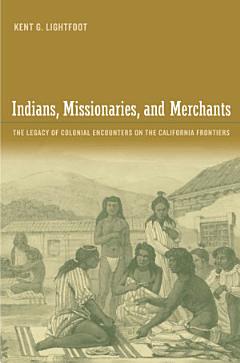The Legacy of Colonial Encounters on the California Frontiers
By:
Kent Lightfoot
Lightfoot weaves the results of his own significant archaeological research at Fort Ross, a major Russian mercantile colony, into a cross-cultural comparison, showing how these two colonial ventures—one primarily mercantile and one primarily religious—contributed to the development of new kinds of native identities, social forms, and tribal relationships. His lively account includes personal anecdotes from the field and a provocative discussion of the role played by early ethnographers, such as Alfred Kroeber, in influencing which tribes would eventually receive federal recognition. Indians, Missionaries, and Merchants takes a fascinating, yet troubling, look at California’s past and its role in shaping the state today.

